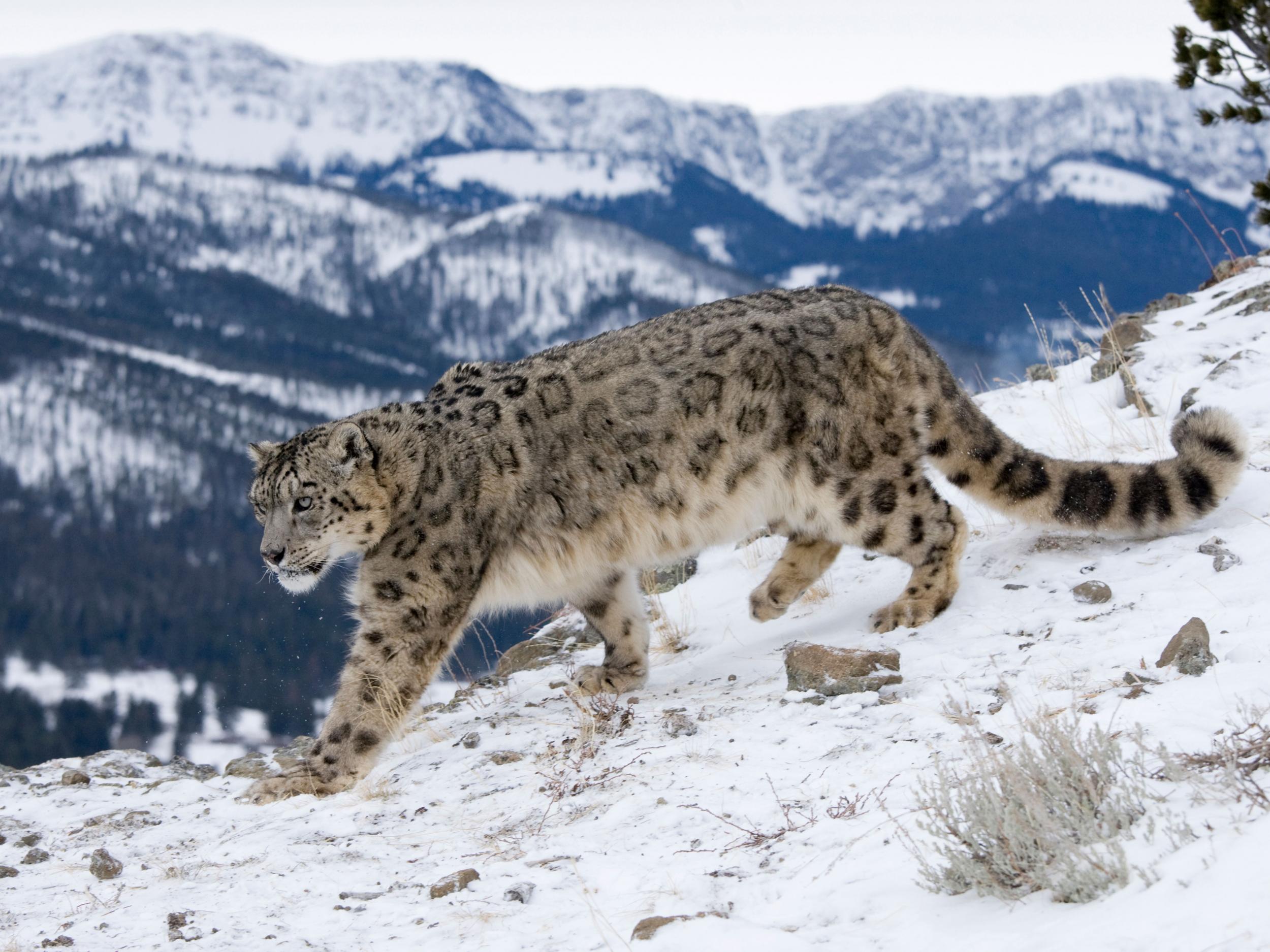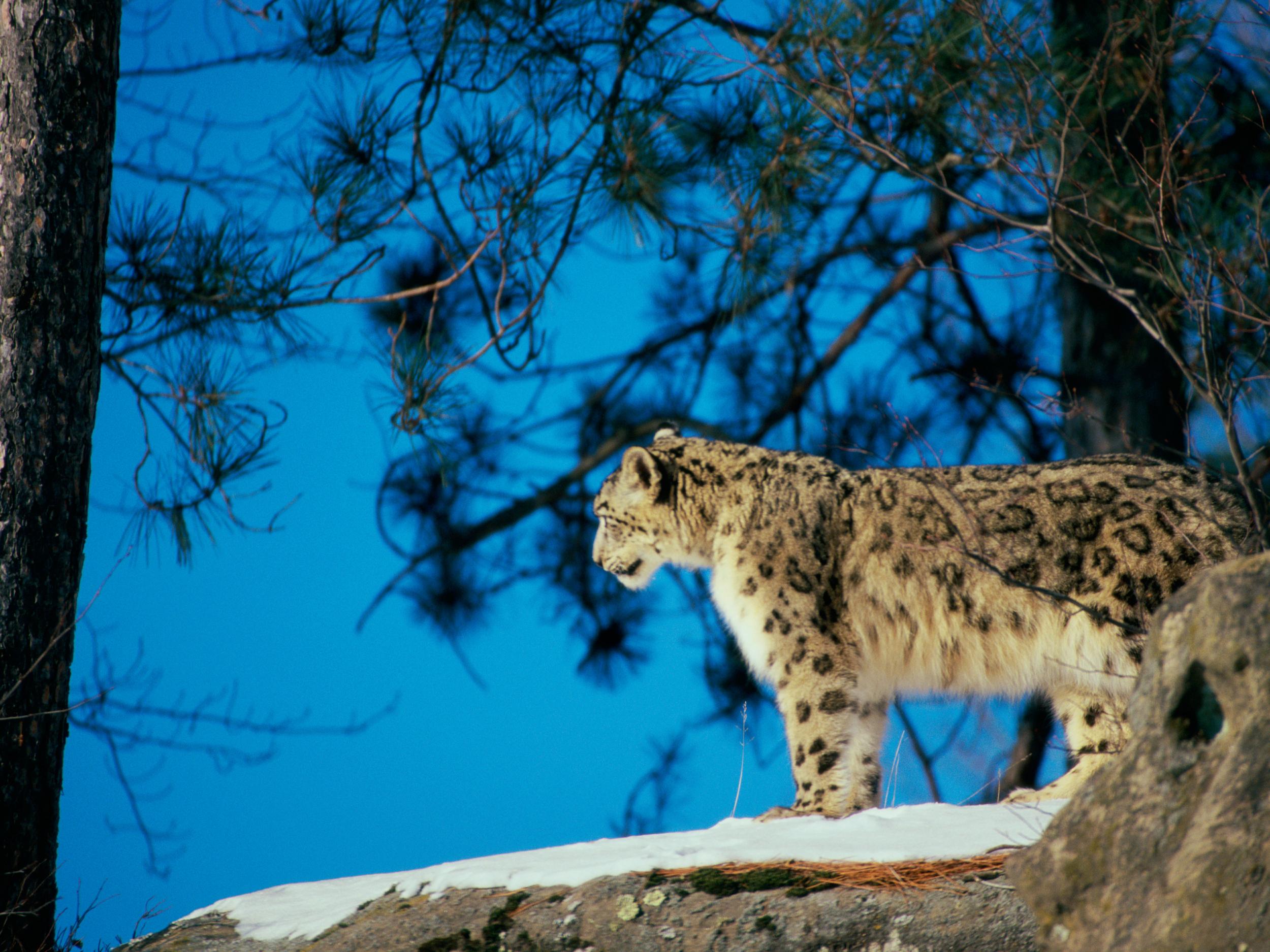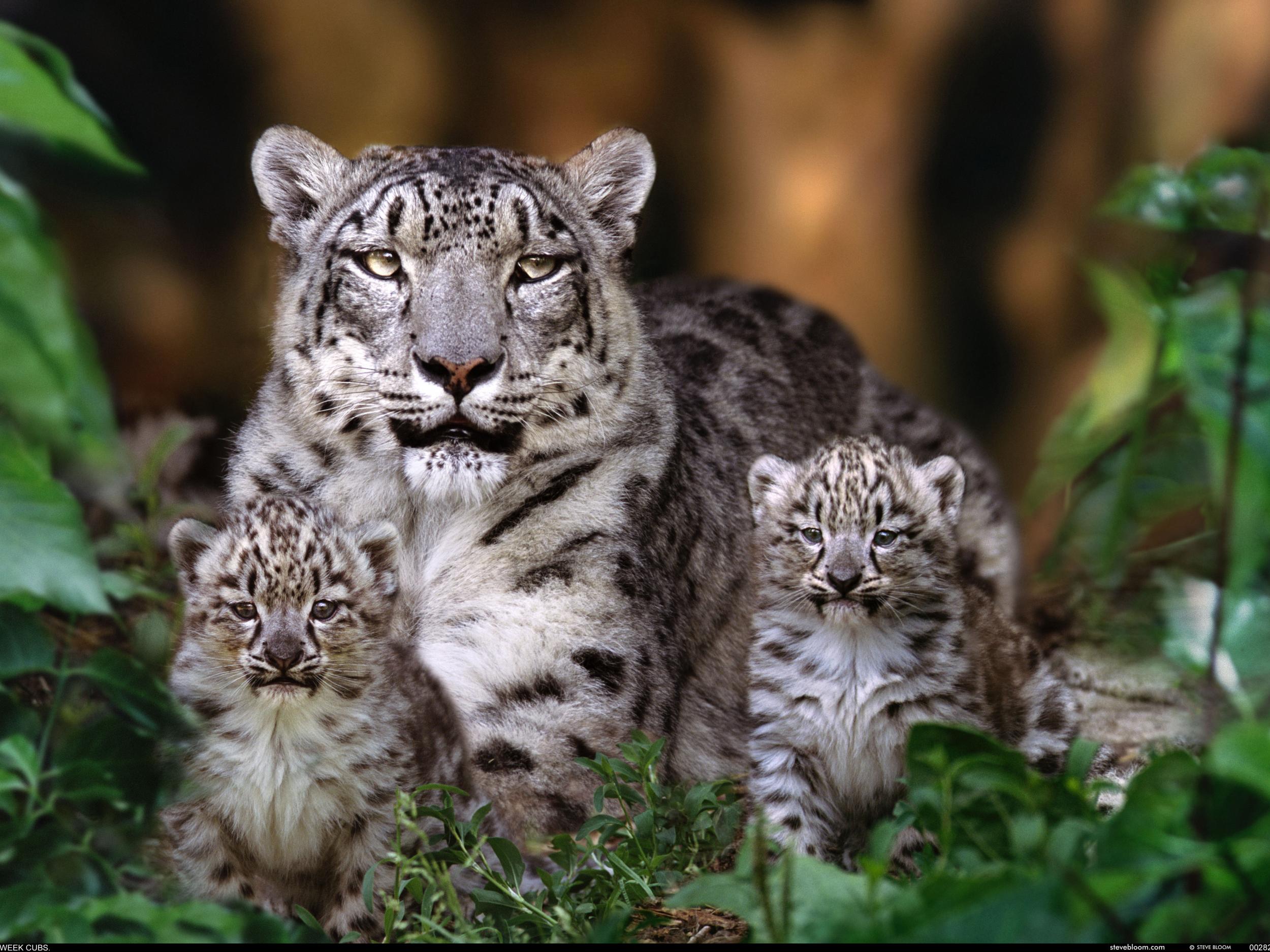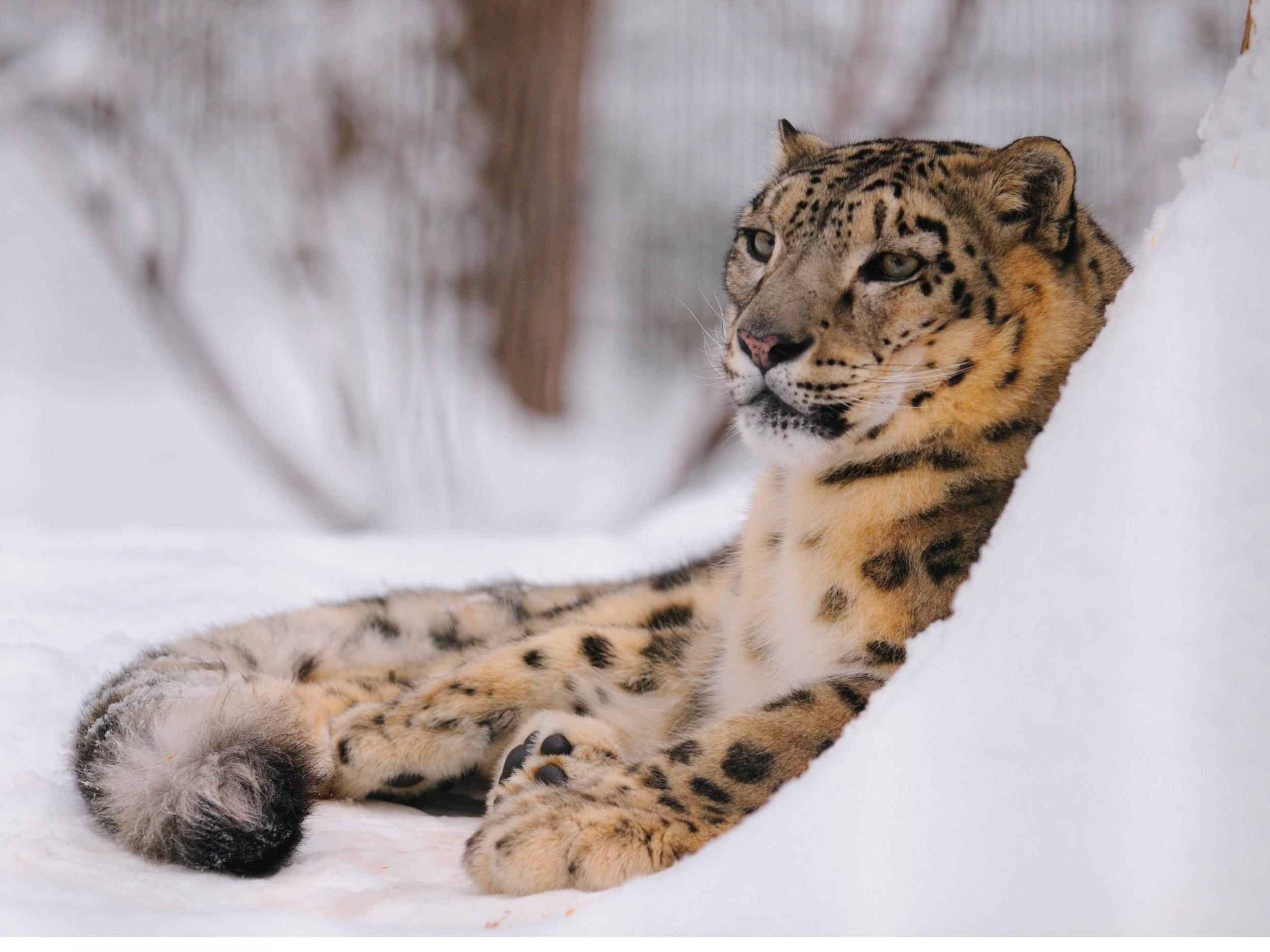The big cats' decline is understated making numbers of snow leopards in the wild impossible to determine
If conservationists across the Himalayas can prove that counting these predators will help villagers more than killing them can, efforts to protect the snow leopard will succeed

Living at an extreme altitude amid the perilously steep mountains of the Himalayas and in a bitter cold climate, snow leopards are among the most difficult of top predators to study. Even after decades of sustained research, no one knows how many of these big and extremely elusive cats remain. Researchers from all 12 Asian nations that these cats call home are trying to remedy that with a five-year census using camera traps set up on remote mountains, radio collaring, and hair and scat identification.
The survey comes on the heels of a controversial decision last year by the International Union for Conservation of Nature (IUCN) to remove the snow leopard from its list of “endangered” species after 45 years. The IUCN reclassified the cat as “vulnerable”, meaning the animal’s risk of extinction is less urgent than experts had believed.
That change was based on estimates that more than 8,000 wild snow leopards exist across Asia but also on an extrapolation that some researchers say probably dramatically overstated the numbers and understated the cat’s rate of decline.

“We don’t even know the true number of these leopards,” said Tsewang Namgail, the director of the Snow Leopard Conservancy India Trust. “It’s all guesstimates everywhere.”
The concern for Namgail and others is that there isn’t unified protection for the big cat across the countries, and even with the IUCN change, the viability of the spotted high-mountain cats remains in doubt because of human settlements, climate change and poaching. Removing leopards from the endangered list, he worries, may give the impression that they’re safe.
Snow leopards exist in pockets in Afghanistan, Pakistan, Kyrgyzstan, Tajikistan, Uzbekistan, Kazakhstan, Nepal, Bhutan, Russia and Mongolia, and in larger numbers in India and China. The new survey, known as Paws (Population Assessment of the World’s Snow Leopards), began this year in India, Pakistan, Kyrgyzstan, Mongolia, Russia and Nepal. But getting results won’t be easy.
That’s because unlike other big cats, snow leopards are specially evolved for cold heights. Snow leopards have the longest and thickest fur of any big cat, and a long, thick tail that they can wrap around themselves to stay warm.
A large nasal cavity and broad facial bones allow the leopards to breathe in very cold air and warm it for breathing, and a high concentration of red blood cells maximises oxygen intake, meaning they don’t easily get tired while climbing mountains. In fact, they’re comfortable at heights reaching 18,000 feet. All these features are essential for their survival and make them especially hard to track, even for the hardiest researchers.
But leopards are, to a degree, predictable – frequenting game trails and ridges and often spraying rocks to mark their territory. As a result, trackers can recognise scrape marks and instal camera traps to identify individual cats based on their spots, which are as unique as fingerprints. The researchers just have to be sure-footed in icy conditions at high altitude and cross their fingers that the cameras hold up. (Some brands perform better than others when the mercury dips below freezing.)
Fieldwork and support for Paws is coming from a mix of government and nongovernmental organisations that have committed more than £4.5m in funds and in-kind assistance to design a snow leopard management plan.
Paws plans to survey between 10 and 20 per cent of the forbidding range, according to Koustubh Sharma, a senior ecologist and international coordinator at the Snow Leopard Trust. He estimated that it will take about five years and the work of about 1,000 forest rangers, scientists and support staff to complete the project.
While there are relatively stable populations of the big cats in China and Mongolia, experts say, human development and climate change have created areas where snow leopards are thinly dispersed. Breaks in their range, whether caused by cities or habitat loss, can create islands of habitat that prevent movement and bottleneck genetic diversity. The discovery last year of three subspecies indicate fractured groups.
Increased human encroachment on the snow leopard range was highlighted in a 2016 report that found that as many as 450 snow leopards are poached annually, mostly for traditional Chinese medicine and as trophy skins.

Warming climates also are altering snow leopard habitat. Glacial melt and overgrazing from livestock speed up mountain erosion and hinder plants’ ability to regenerate, which gives herbivores fewer food options, thereby threatening leopards. When there are fewer food options, such as the blue sheep these cats prefer, leopards often come into conflict with humans.
In much of Asia, livestock accounts for as much as two-thirds of leopard diets. When leopards kill livestock, locals often kill leopards. The cycle is expected to worsen: loss of alpine grasslands and an advancing tree line could cut leopard habitat by 30 per cent, meaning more potential for intra-species conflict. In recognition of this, Panthera, which has deployed more than 500 camera traps across seven nations for previous research projects, has helped protect leopards as it counts them.
To reduce attacks on local livestock and get buy-in for the snow leopard project from local farmers, the group has installed netted pens in India and Tajikistan to keep out the cats and has vaccinated domestic animals in Pakistan in exchange for getting farmers not to kill snow leopards.
More than 50 per cent of the human population in the animal’s range is engaged in farming and herding, and more than 40 per cent lives below the poverty line. And when attacks on livestock happen, people may not think about helping a vulnerable species as much as about retribution: in a town near the Indian city of Srinagar, villagers recently stoned a leopard to death after it was found by herders in a pen surrounded by dead goats.
Yet some have found opportunity in living near snow leopards. As pens have reduced leopard predation by as much as 95 per cent in some areas, says Namgail, a space has opened for snow leopard ecotourism.
For instance, in Ladakh, in the northern Indian border state that abuts China and Pakistan, snow leopards exist at a density of about four to six per 100 square kilometres versus less than one elsewhere in the range.

This abundance is attracting both tourists and scientists. Savvy local herders have turned their homes into hotels as people arrive in search of snow leopards. Villagers act as spotters, offering hikes to camera traps or a chance to see the cats, sometimes from the side of the road and the warmth of an SUV.
Homestays can bring in $500 to $2,000 a year, with 10 per cent of proceeds pooled into a village’s communal savings to improve habitat, protect pastures, turn valleys into reserves and improve education.
In fact, burgeoning scientific and ecotourism business has created a different worry: that a warming climate may reduce the number of cats and make it harder to attract visitors.
“Without snow, it’s very hard to track shan,” says Tsewang Norboo, the owner of the Snow Leopard Lodge, using the Ladakhi word for snow leopard. ’’We need them.”
Despite the challenges, Namgail sees progress. A decade ago, when Namgail tried to convince Ladakhis that leopards could put money in their hands, “villagers laughed at us”, he says.
If the Indian biologist and his colleagues across the Himalayas can prove that counting leopards can help villagers more than killing them can, Paws will be a success.
For snow leopards to have a better chance of long-term survival, they need the help of the people living beside them, he says. “There’s no other way.”
© The Washington Post
Join our commenting forum
Join thought-provoking conversations, follow other Independent readers and see their replies
Comments
Bookmark popover
Removed from bookmarks